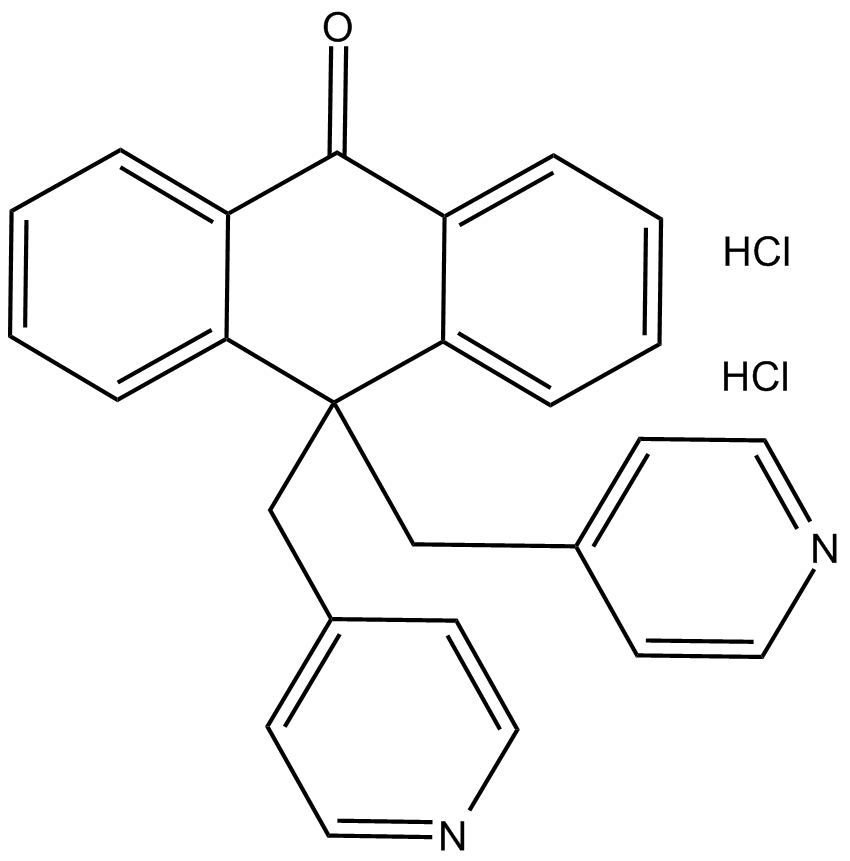XE 991 dihydrochloride |
| Catalog No.GC11919 |
KV7 (KCNQ) voltage-gated potassium channels blocker
Products are for research use only. Not for human use. We do not sell to patients.

Cas No.: 122955-13-9
Sample solution is provided at 25 µL, 10mM.
The KCNQ potassium channels are neuronal modulators which combine with other KQT or KCNE channels to form heteromultimers. XE 991 is a blocker of KCNQ channels that potently inhibits KCNQ1 and 2 homomeric channels (IC50 = 0.75 and 0.71 μM, respectively) as well as KCNQ2+3 heteromultimers (IC50 = 0.6 μM).[1] It much less effectively blocks eag, erg, and elk channels. The effectiveness of XE 991 against KCNQ channels depends on partners or accessory proteins.[2] Through these actions, XE 991 enhances acetylcholine release from rat brain slices (EC50 = 490 nM) and shows good in vivo potency and duration of action, suggesting utility in Alzheimer’s disease therapeutics.[3] While early studies focused on actions in the central nervous system, XE 991 can be used to explore the roles of KCNQ channels in neuronal regulation throughout the body.[4]
Reference:
[1]. Wang, H.S., Pan, Z., Shi, W., et al. KCNQ2 and KCNQ3 potassium channel subunits: Molecular correlates of the M-channel. Science 282(5395), 1890-1893 (1998).
[2]. Wang, H.S., Brown, B.S., McKinnon, D., et al. Molecular basis for differential sensitivity of KCNQ and IKs channels to the cognitive enhancer XE991. Molecular Pharmacology 57(6), 1218-1223 (2000).
[3]. Zaczek, R., Chorvat, R.J., Saye, J.A., et al. Two new potent neurotransmitter release enhancers, 10,10-bis(4-pyridinylmethyl)-9(10H)-anthracenone and 10,10-bis(2-fluoro-4-pyridinylmethyl)-9(10H)-anthracenone: Comparison to linopirdine. Journal of Pharmacology and Experimental Therapeutics 285(2), 724-730 (1998).
[4]. Hawryluk, J.M., Moreira, T.S., Takakura, A.C., et al. KCNQ channels determine serotonergic modulation of ventral surface chemoreceptors and respiratory drive. Journal of Neuroscience 32(47), 16943-16952 (2012).
Average Rating: 5 (Based on Reviews and 22 reference(s) in Google Scholar.)
GLPBIO products are for RESEARCH USE ONLY. Please make sure your review or question is research based.
Required fields are marked with *




















